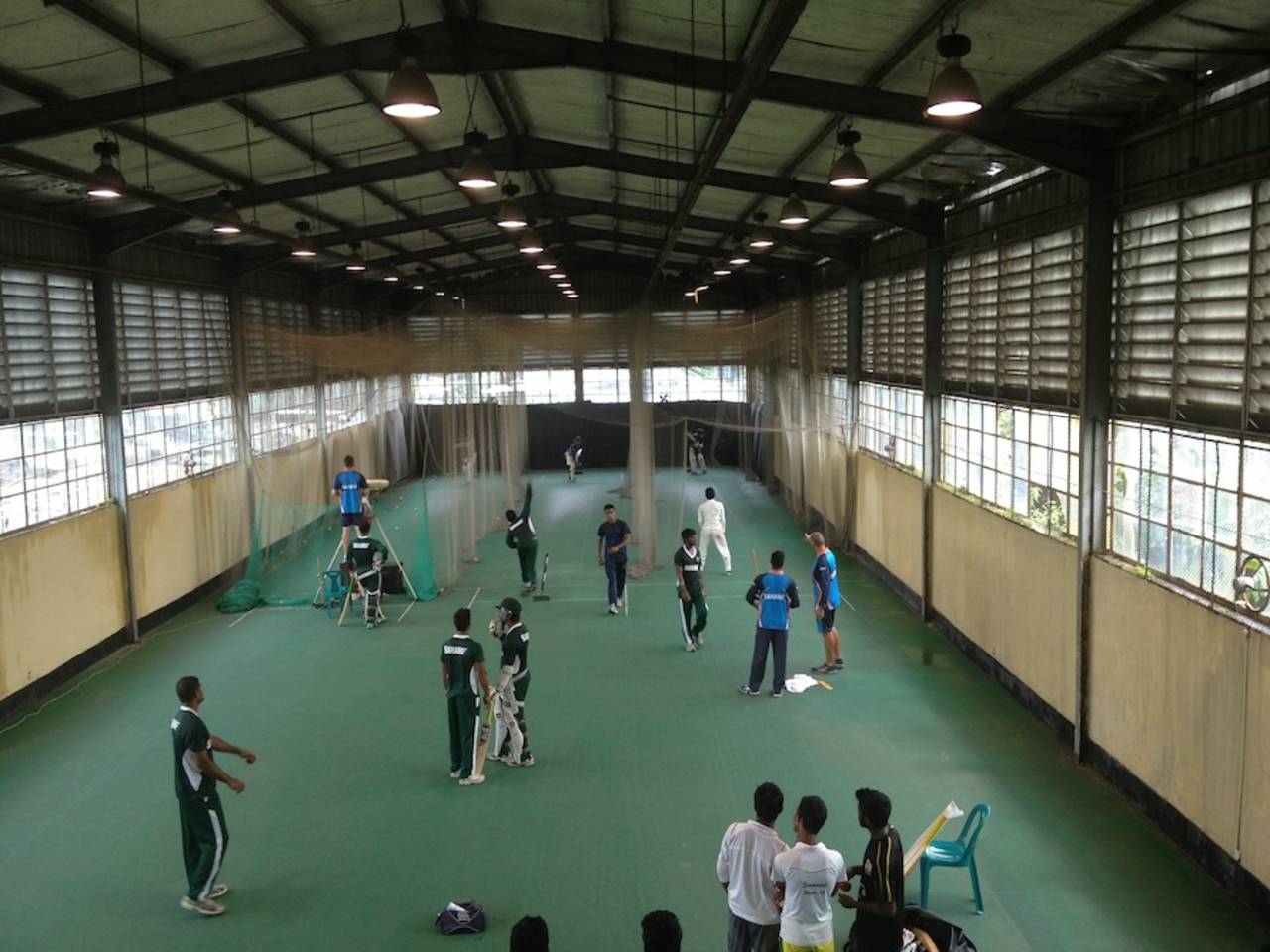Viva indoor cricket
It's one way to keep in touch with the game in the long, dark English winters
Nicholas Hogg
21-Nov-2014

Cricket always finds a space • ESPNcricinfo Ltd
Cricket has always improvised itself into non-traditional spaces. From living rooms, ship decks and landing strips, to the ice of the Arctic. The beautifully filmed advert for the cricket World Cup shows true fervour knows no bounds, with kids across the globe running in to bowl on beaches, in alleyways and backyards.
Years before I first walked onto a cut-grass wicket with teams in white, I played on a tarmac pitch against factory walls. Balls ricocheted off cars and rolled off roofs, and the dimensions of the brick-lined stadia kept the ball almost constantly in play, unless one cleared the gable and a six-and-out was awarded. We played a fast, frenetic game, and all my friends learned how to bowl an array of cutters, legbreaks and googlies, because that non-swinging tennis ball would soon disappear if we just threw down pies.
So it was no surprise that when indoor-cricket mania hit the UK in the mid-'80s I was instantly hooked.
A warehouse across the road from my crumbling comprehensive school was converted into a state-of-the-art indoor stadium, and it was as if Spaceship Cricket had landed. Four net courts, complete with digital scoreboards, two-tone green-and-beige Astroturf, and a bar big enough to quench the thirst of the dozens of teams that signed up for the newly formed leagues.
For this version of rainproof cricket (Wikipedia has a German version from 1968-69 credited as one of the first organised forms) I must thank Perth property developer Paul Hanna and his colleague Mick Jones, two have-a-go Aussies inspired by the groundbreaking innovations and popularity of Kerry Packer cricket in the 1970s. Convinced an indoor version of the sport could be a commercial success, Hanna and Jones tweaked the rules and equipment of the outdoor game to reduce the dangers of a hard ball, and to keep the game fast-paced and all-involving - in the eight-a-side version, every player bats and bowls, and the springy netting and small courts mean fielders can hardly lounge about or daydream.
In 1979, Hanna and Jones raised the $20,000 necessary to convert a Perth factory into the original indoor cricket arena, and it didn't take long for the yellow-ball game to catch on nationwide. Centres opened up all over Australia, and in 1984 an indoor series was televised for the first time. By 1986 the sport was en vogue across the cricket-playing world, and it was estimated that nearly 1 million participants played weekly - and that figure included around 250,000 women players.
By now I was a regular in a team at the Indoor Cricket Pavilion in Leicester. The game had widespread coverage and uptake in the UK, and professionals and amateurs alike took to the court to try out this miniature version of our national summer game - there is a great black-and-white photo of David Gower about to run out Paul Downton in Indoor Cricket, a coaching manual written by former England Ladies Avril Starling and Megan Lear.
It was in an indoor arena that I played against my first international player, Jo Chamberlain, one of England Ladies' star players at the time, who managed the centre. I have fuzzy memories of sneaking out of school with my mate Darren Maddy - future Leicestershire, Warwickshire and England player - to have a knockabout in the empty courts with Jo when she wasn't busy.
And that was just one bonus of the indoor version, that players (like me) who were bereft of cricket in the long, dark English winters could play all year round. Last week, when an offer to play a one-off match in a school gym came up, I jumped at the chance - well, limped, and strapped on the Velcro supports. And although we lost - on a Super Over after a tie - and I misread one of the rules particular to the venue (a six was not a six, unlike the Aussie original version where the back net was a boundary, and not a catchable hit) the night was a lot of fun, and left me nostalgic for the days when indoor cricket ruled the winter.
I have no idea why the bubble burst, but it did. The warning signs at my local pavilion appeared when two of the courts were converted into five-a-side football pitches. And then certain nights of the week were entirely devoted to football. And then the shutters came down, and once again the warehouse was defunct - the empty car park waiting for kids like me to turn it into a tarmac pitch.
One statistic of indoor cricket I found estimated that 80% of participants were actually non-cricketers. Well, the cricket World Cup advert is for the true fan, the fanatic. Because it doesn't matter where we play, whether down an alley or in a dusty side street. Cricket always finds a space, a form. And watch those windows when the 2015 tournament starts.
Nicholas Hogg is a co-founder of the Authors Cricket Club. His first novel, Show Me the Sky, was nominated for the IMPAC literary award. @nicholas_hogg